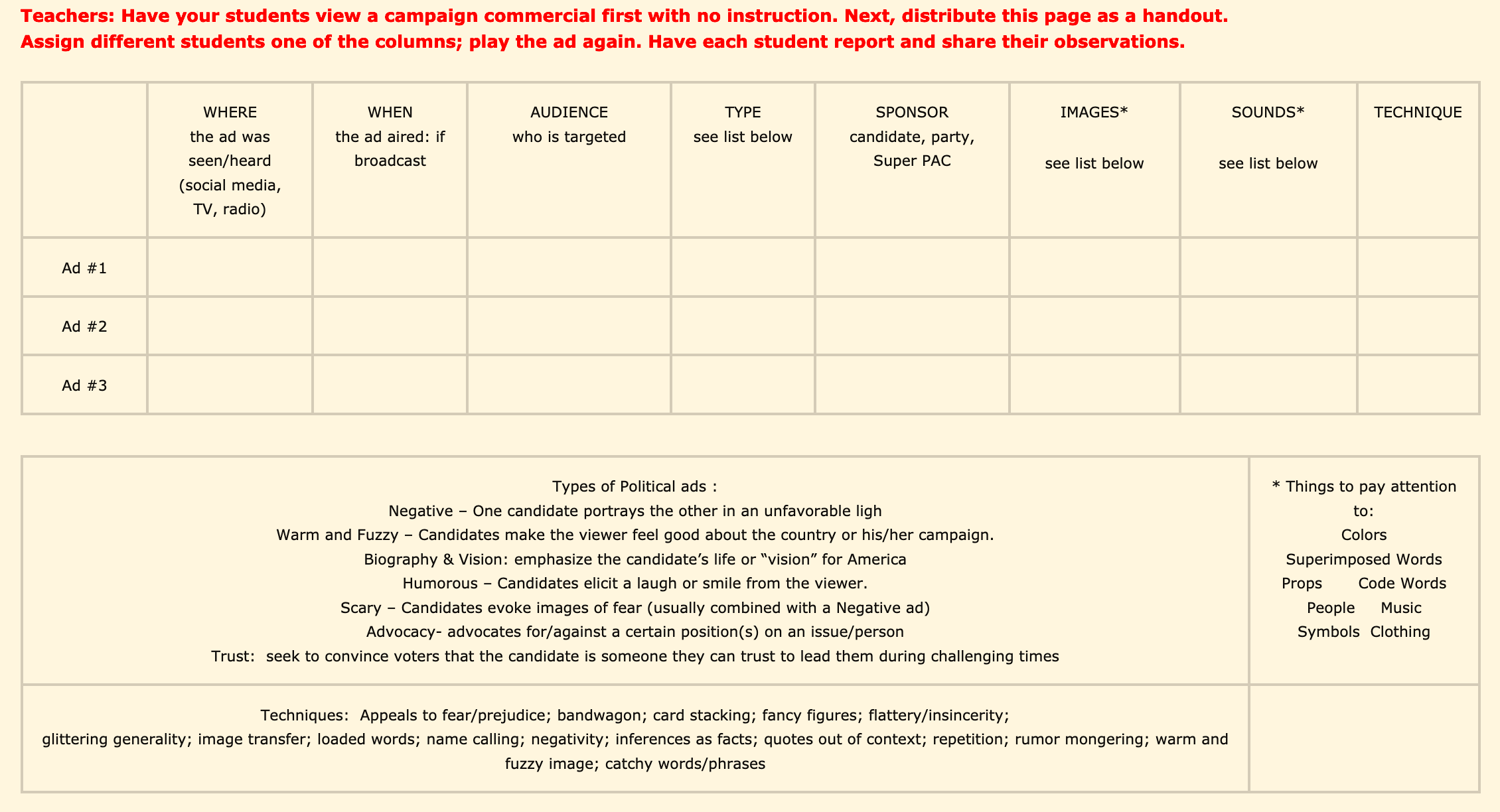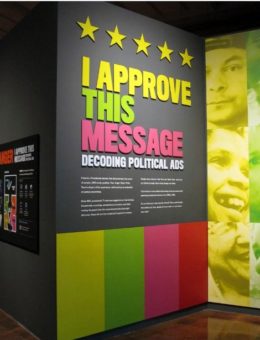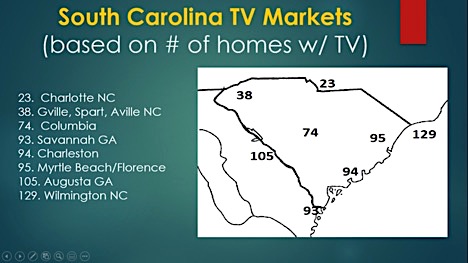Help Students Analyze the Impact of Political Ads
A MiddleWeb Blog
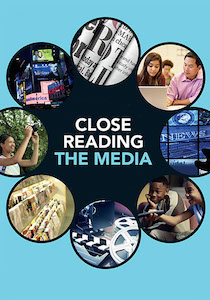 For Media Literacy Week 2019, our columnist Frank W Baker offers some timely ways to help students stay afloat in the tidal wave of political ads headed our way!
For Media Literacy Week 2019, our columnist Frank W Baker offers some timely ways to help students stay afloat in the tidal wave of political ads headed our way!
By now, you and your students have probably seen any one of a number of political commercials for candidates running for President next year.
In addition to the large slate of Democratic Primary candidates, there are ads aimed specifically for and against President Trump. We’re also beginning to see “issue” ads about the environment, foreign policy, immigration and the economy.
As a long time media educator, I am an advocate for using any one of these advertisements in the classroom to help students understand how persuasive messages are conveyed in 30 seconds (or less). It’s also a good opportunity to discuss the propaganda techniques used as well as the benefits and economics of TV.
Teaching Advertising
Whether you teach English, Social Studies or Media, using ads with students is a sure way to get their attention and to keep them engaged. They’re exposed to ads all of the time, but they’re probably unaccustomed to analyzing and deconstructing the words and images in these slickly produced messages.
Without a doubt, students need these important “media literacy” skills in an era of constant interaction with information streams, including Instagram, Facebook, Twitter and other forms of social media.
You’ll find a variety of related posts at my MiddleWeb blog Close Reading the Media that can help with lesson planning. Asking students “what is the purpose of advertising” might be helpful. The responses you may get will probably be along the lines of “to sell stuff.” In reality, selling is not the purpose of advertising: persuasion is. (See this Prezi on the common techniques of persuasion.)
So how do ads persuade? Through the words, images and sounds used. In the political arena, most serious candidates employ consultants to help them craft their messages and maximize their impact. At my own website, I’ve created a handy Political Advertising Analysis Worksheet, which you can download and use with students.
Assign one of the columns in the handout and have students respond after viewing one or more ads. Students are challenged here to think about (for example) the TV show where they saw the ad. The placement of the ad is important because the candidate desires to reach a specific demographic (for example: Females age 24-44).
Class Activity Suggestion
This activity has students – singly or in small groups – write a 30 second commercial for a candidate. With the names of Presidential hopefuls in a hat or bowl, students draw a name. In a separate container, place small pieces of paper listing any one of a number of various issues—like climate change, the economy, the Middle East, poverty, unemployment, gender rights, etc.
Students select an issue and then research their candidate’s position on that topic. In addition to finding position statements on the candidate’s websites, they can also use a reliable database (i.e. EBSCO; Gale General OneFile; InfoTrac Newstand) to determine what the candidate may have previously said, in forums or meetings, about that topic.
Using a simple 30-second commercial script template, downloadable from my website, they write the ad for their candidate. (NOTE: you can make your own script form by creating two vertical columns on an 8 X 11 sheet of paper: label one column AUDIO and the other column VIDEO).
These tips at the Biteable site, Making a Political Campaign Video, will give students a deeper look into the elements of an effective political ad. Once the ad is completed, a representative stands up and reads the ad aloud and is timed to make sure it is exactly half-a-minute long. Edit as needed!
Who Benefits?
Another critical thinking question for your students to consider is: who benefits when politicians purchase time on TV stations and networks? The primary answer here is: the media companies themselves.
I recently discovered a place online where your students can research exactly how much candidates pay to buy time on your local TV station. The Federal Communications Commission (FCC) requires stations to maintain political files. That’s where the actual contracts are placed and where students can download and study them.
Here is the procedure for locating ad costs and contracts:
How to Locate the Cost of a
Presidential Campaign Commercial
on Your Local TV Stations
-
-
- https://publicfiles.fcc.gov/tv-profile/wolo-tv/political-files/ (Substitute your local station’s call letters in the red area of the URL.)
- Click the folder labeled 2019
- Click the folder labeled FEDERAL
- Click the folder labeled PRESIDENT
- See folders for individual candidates and click any individual to see list of his/her contracts.
-
►I found, for example, that Democratic candidate Tom Steyer, an active early buyer of 2020 political ads, paid $150 for a local ad during Good Morning America Sunday on July 14; $400 for a local ad during Wheel of Fortune; and $35 for an ad during a local 11 p.m. newscast.
Again, you might task students, or groups of students, with researching a specific candidate or Super Pac. In addition to investigating your local station, you might decide to have them research TV stations outside your general area. For example, candidates may be purchasing more ad time in states like Iowa and New Hampshire whose primaries and caucuses occur first. Compare prices, for example, at the ABC affiliate nearest to you and the affiliate in Des Moines.
NOTE: Legitimate candidates, by law, must be charged the ‘going rate’ for a 30 second spot. Super Pacs – which are theoretically not directed by actual candidates – can be charged anything and your students may discover a huge discrepancy in the cost of a 30 second ad.
I recently presented this idea to Social Studies educators gathered at their annual conference here in South Carolina, where I reside. I showed them this slide.
The numbers, adjacent to city names, represent the size/rank of the TV market. The rating company Nielsen assigns the numbers. Those markets which have more homes with television will have higher ranks than those markets with fewer TVs. I included markets outside South Carolina because some cities’ TV signals cross over state lines via cable and satellite. [Suggestion: create a state map graphic, similar to mine, to help students understand market size and ad pricing.]
One of the things students may discover is that the larger the market, the higher the cost of a 30 second ad. Will students know why that it is the case?
Databases of Political TV Commercials
In 2019, there is no shortage of places online where you and your students can find, download, watch and study political advertising. Here is a short list of video sources you may wish to consider.
Political Ad TV Archive https://politicaladarchive.org/
Facebook Ad Library https://www.facebook.com/ads/library/?active_status=all&ad_type=all&country=US
Snap Political Ad Library https://www.snap.com/en-US/political-ads
ProPublica’s Political Ad Library https://projects.propublica.org/facebook-ads/
All Political Ads https://www.youtube.com/channel/UCvuOH0oJFwElBgRKz-eMlLw
Conclusion
The 2020 presidential campaign is upon us. Whether you reside in a “battleground” or swing state – or a so-called “safe” state – we’re all guaranteed to see (or read about) political ads that will bombard the airwaves as we approach primary and convention season.
We know political advertising persuades and influences. When educators commit to taking the time to use these ads in instruction, and guide students through the analysis and deconstruction process, we’re helping them become better critical thinkers and viewers.
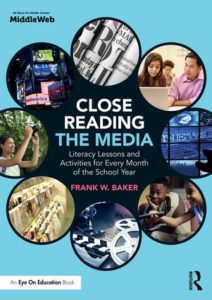 Frank W Baker is a media literacy educator and long time blogger for MiddleWeb. He was recently recognized internationally for his work in media literacy education with UNESCO’s Global Media & Information Literacy Award. Baker works with teachers nationwide to help them better teach media literacy and critical thinking about media messages.
Frank W Baker is a media literacy educator and long time blogger for MiddleWeb. He was recently recognized internationally for his work in media literacy education with UNESCO’s Global Media & Information Literacy Award. Baker works with teachers nationwide to help them better teach media literacy and critical thinking about media messages.
Frank’s book Close Reading The Media: Literacy Lessons and Activities for Every Month of the School Year (Routledge, 2018) has been recommended by the School Library Journal. See our review. (Use discount code MWEB1 at checkout on routledge.com for 20% off.)

